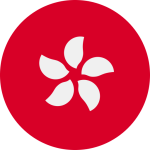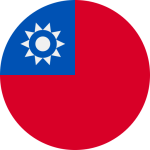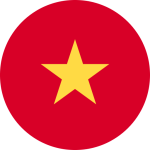

Designing a great website involves more than aesthetics and intuition. While design skills are essential, they alone don’t guarantee functionality. Relying solely on design can lead to unexpected user issues. Experienced web designers emphasize the importance of involving user centered design process steps.
User-centered design ensures that a website is validated at every stage, meeting specific needs effectively. In a competitive market, designing around users is the key to success, as they provide crucial insights for a superb user experience and a successful website.
Designing for Success: The Principles of User-Centered Design
User-centered design (UCD) places users at the core of the design procedure. Developers should prioritize the process that focuses on the user – their requirements, objectives, and input.
UCD is an approach to design that prioritizes users’ needs throughout the design process. It is widely utilized in website design, benefiting both designers and business leaders by incorporating user requirements from initial concepts to final website delivery.
The primary objective of user-centered design is to understand users profoundly and allow their needs, values, and expectations to shape the design process at every stage. Achieving this goal involves several key steps and guidelines outlined in this article. We’ll discuss how to implement these steps effectively, the tools to aid the process, and crucial factors to remember throughout the UCD journey.
The Steps of the User-Centered Design Process
Step 1 – Understand User Needs and Environment
The first in user centered design process steps is conducting comprehensive research on your target users and how they will engage with your website. Extensive design solutions research is critical during this phase to gain insights into various aspects, including:
- User Profiles: Identifying the individuals who will use your website. This involves understanding their demographics, backgrounds, and roles.
- User Goals and Motivations: Determining what drives users to interact with your website, their primary objectives, and what they hope to achieve through its use.
- User Challenges: Recognizing the obstacles and problems users commonly encounter when trying to fulfill their goals or needs related to your website.
- User Needs and Behaviors: Gaining an understanding of the general needs, preferences, and behaviors of your target audience as they pertain to your website.
During the interactive design process, aim to understand user interactions with your website and focus on three critical factors: the platform they use (e.g., desktop or smartphone), the context of their interaction (e.g., office or on-the-go), and their emotional state throughout the user journey.
Step 2 – Define User and Business Needs
To ensure the success of your UX design, it’s essential to start by deeply understanding your intended users and their needs. This understanding will be the foundation for establishing your company’s objectives and the benchmarks for measuring progress. Here are some key questions to consider when defining these aspects:
User Needs and Expectations
- Who are your target users? What are their demographics and characteristics?
- What are the primary goals and tasks users aim to accomplish on your website?
- What pain points or challenges do users typically encounter when interacting with similar websites or services?
- How do users prefer to access and navigate websites (e.g., mobile devices, desktops)?
- What features or functionalities are most important to your users?
- Are there any specific cultural or regional considerations that might impact user expectations?
Company Objectives
- What are the overarching goals of your organization with this website?
- How does the website fit into your broader business strategy?
- What key performance indicators (KPIs) will be used to measure the website’s success from a business perspective (e.g., conversion rates, revenue growth, user engagement)?
- What are the budget and resource constraints for the project?
Alignment and Value Proposition
- How do the user needs align with your company’s objectives?
- What unique value can your website offer to users that sets it apart from competitors?
- How will meeting user needs contribute to achieving your business goals?
Step 3 – Generate Design Ideas
Now, with a clear understanding of user needs and company goals, you can dive into the user-centered design process steps and start crafting design solutions. This phase, familiar to most designers, involves selecting and creating various website features and assets.
Drawing from the insights gathered about your users. This stage encompasses tasks such as defining user flows, establishing information architecture and site maps, making choices regarding colors, icons, images, language, and tone, creating wireframes, prototypes, and designing user onboarding experiences. Additionally, it involves the critical aspects of UX copywriting and implementing accessibility features.
Crucially, all design decisions must be guided by your knowledge of users and the specific problem you’re addressing. Incorporate business requirements to align with budget constraints and corporate guidelines, balancing user-centricity and organizational goals.
Step 4 – Assess Design Success
Once you have devised some initial solutions, it is time to assess and appraise your designs to determine if they have achieved the objectives established in step two. This is where you thoroughly evaluate the website and compare it to the requirements of both the user and the business. The most effective approach to accomplish this is by conducting usability testing with actual users.
During the testing phase, it is crucial to pay close attention to your users and ask important questions such as:
- How are users responding to the website?
- What’s working well, and what isn’t on the website?
- Is the website successfully addressing user concerns?
- What are the areas for website enhancement?
- Is the company achieving its objectives? If not, what are the reasons?
Numerous methods can be employed to conduct usability testing, and we will provide some valuable resources later on. Nevertheless, it is vital to take a step back and carefully listen to the feedback from the users. Observe their verbal and non-verbal reactions closely and document their responses thoroughly.
How Can We Help
PREMIA TNC aids user-centered web design. We recognize websites’ vital role in business expansion, ensuring your site isn’t just present and attracts clients. As a top Singapore web development firm, we provide digital solutions prioritizing usability, user experience, responsive design, and strategy.
Our experienced web development team is dedicated to turning visitors into customers and driving profits. We align our services with user needs and business goals for a distinctive online presence. While in-house development may seem tempting, outsourcing to our web developers ensures a unique online voice and a path to a robust online presence. Contact us to enhance your digital presence.
FAQs
Q1. What is user-centered design?
A: User-centered design is an approach that prioritizes user needs and preferences throughout the design process to create compelling website.
Q2. Why is user research necessary in this process?
A: User research helps understand user behaviors, needs, and pain points, ensuring the final website meets their expectations.
Q3. How does user-centered design benefit businesses?
A: It leads to user satisfaction, increased loyalty, and improved website success, ultimately enhancing a company's reputation and revenue.
Q4. What are standard methods for gathering user feedback?
A: Methods include surveys, interviews, usability testing, and analytics, helping designers make informed decisions.
Q5. How can a company implement user-centered design effectively?
A: By involving users from the beginning, iterating on designs based on feedback, and continually optimizing for the best user experience.




















